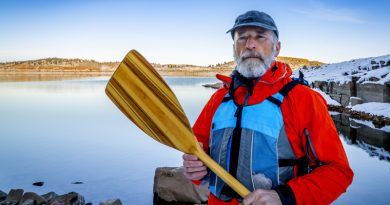
Can You Paddle A Pedal Kayak?
Pedal kayaks have surged in popularity due to their hands-free operation, allowing paddlers to use their legs to propel the kayak forward. But what if the pedal system fails or the water conditions demand a different approach? Can you seamlessly switch to paddling, and how effective is it?
Understanding the Challenges
Pedal vs. Paddle
Pedal kayaks are designed primarily for foot propulsion, using a pedal drive system that powers fins or a propeller. This setup leaves the paddler’s hands free for fishing or other activities. However, paddling a pedal kayak is not only possible but sometimes necessary. When navigating through shallow waters, dense vegetation, or if the pedal system malfunctions, a paddle becomes indispensable.
Space and Weight Distribution
The presence of the pedal drive system and the associated mechanics can take up significant space and alter the weight distribution of the kayak. This means that when you switch to paddling, you need to adjust your technique to accommodate these changes. The pedals and drive mechanism can create obstacles that make traditional paddling slightly more challenging, but not impossible .
Maneuverability and Speed
While pedal kayaks offer increased speed and efficiency, especially over long distances, paddling them can be less straightforward. The bulkiness of the pedal system might interfere with the paddling motion, and the added weight can make the kayak harder to maneuver and paddle swiftly. Nonetheless, using a paddle can provide greater control in tight spots or when precise maneuvering is needed.
The Best Solution: Combining Paddling and Pedaling
To make the most of your pedal kayak, it’s essential to be proficient in both pedaling and paddling. Here are some strategies to enhance your experience:
Adapt Your Technique
When paddling a pedal kayak, adjust your paddle strokes to account for the extra components. Use shorter, more controlled strokes to navigate around the pedal system. Ensure you are comfortable switching between pedaling and paddling as conditions change. Practicing this transition will make you more adaptable on the water.
Maintain Your Equipment
Regularly inspect and maintain your pedal drive system to minimize the risk of malfunctions. Keeping your equipment in top shape reduces the chances of needing to rely solely on paddling unexpectedly. However, always carry a paddle as a backup and ensure it’s easily accessible.
Optimize Your Setup
Consider using a telescoping paddle, which can be adjusted to different lengths to suit your paddling needs, especially if you’re standing or sitting at different heights. Additionally, make use of paddle holders or clips to secure your paddle when it’s not in use, ensuring it’s readily available when needed.
Practice in Various Conditions
Familiarize yourself with paddling in different water conditions. Whether it’s calm lakes, rivers with current, or coastal waters with waves, practicing in varied environments will improve your versatility and confidence.
Resources and Tools Needed
To effectively paddle a pedal kayak, you’ll need:
- High-Quality Paddle: A durable, adjustable paddle suited for both seated and standing paddling.
- Paddle Holder: To secure your paddle when using the pedal drive system.
- Regular Maintenance Tools: For inspecting and maintaining the pedal drive system.
- Flotation Device: Always wear a personal flotation device (PFD) for safety.
- Spare Parts: Keep essential spare parts for the pedal drive system handy, such as pins or propeller blades.
Embracing the Dual Capability
As I paddled back to shore, the versatility of my pedal kayak became clear. It’s not just about choosing between paddling or pedaling but about mastering both to adapt to whatever the journey demands. The ability to switch seamlessly enhances your kayaking experience, making it richer and more responsive to the natural world.
So, dear reader, as you venture out with your pedal kayak, embrace the dual capabilities it offers. With the right preparation and practice, you can confidently navigate any waterway, knowing you are equipped for whatever the adventure brings. Remember, it’s not just about the destination but the journey and how you adapt along the way.






